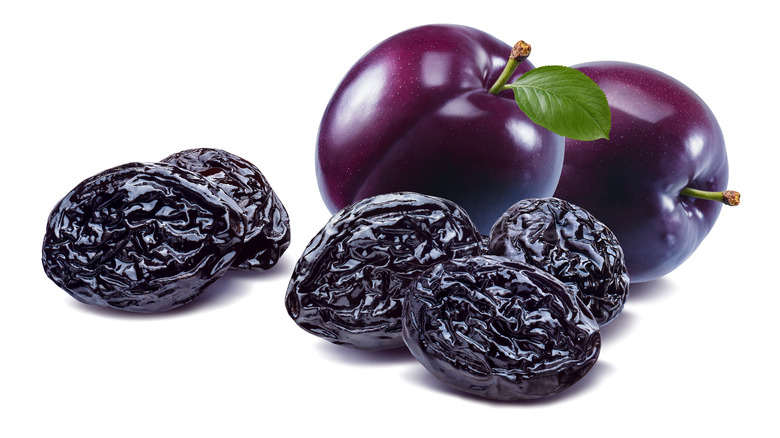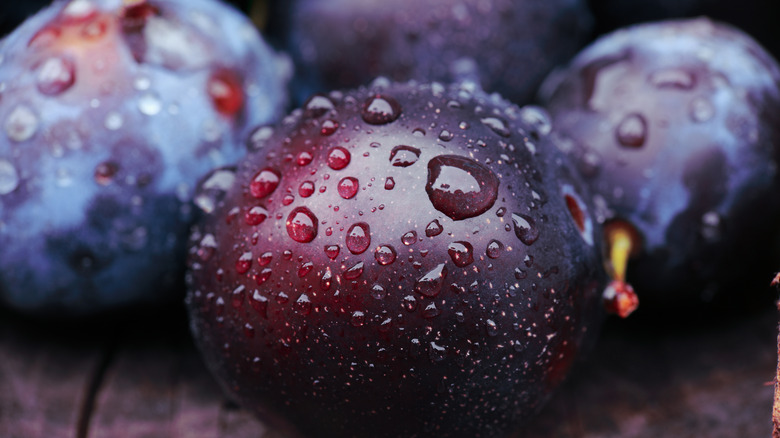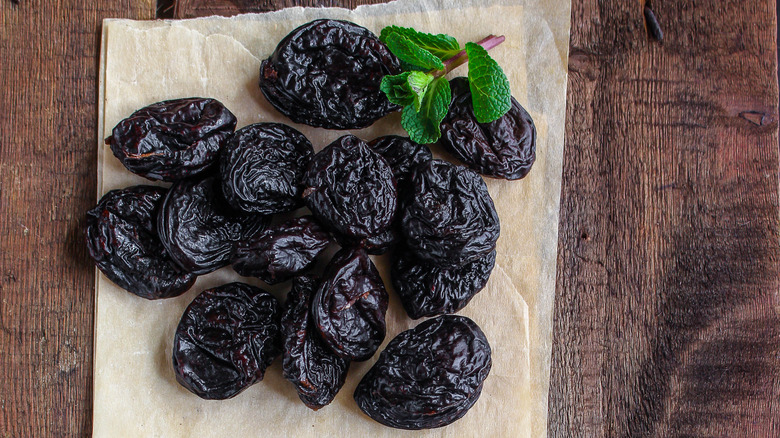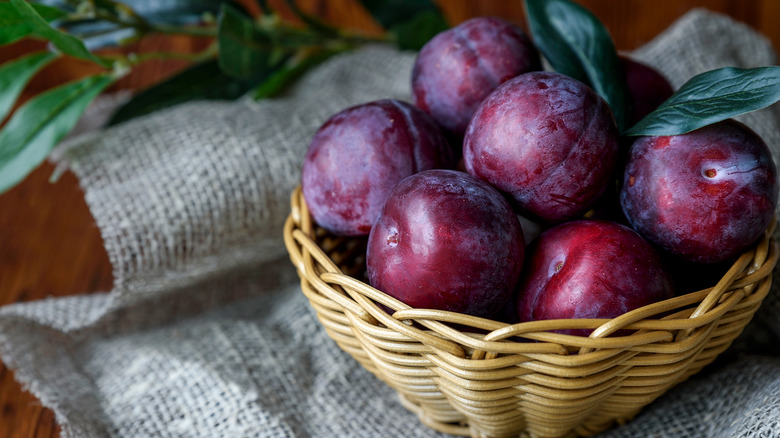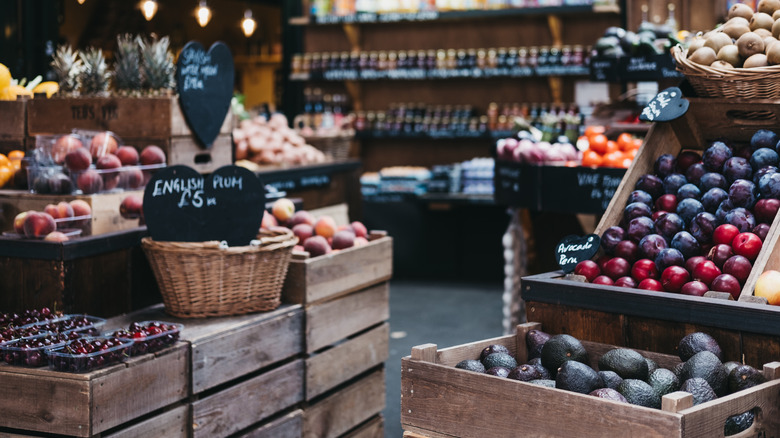Prunes Vs. Plums: How Are They Different?
You may know about the numerous health benefits of eating prunes, or you might have a good grasp on how prunes and dates are different. But what exactly makes prunes and plums different? They may both be juicy and delicious, but there's plenty of nuances between plums and prunes. While plums are fresh and prunes are dried, there's still some confusion about these two fruits.
It turns out, there's a simple explanation for that: prunes are plums that are dried. Straightforward as that may seem, this doesn't mean that you can dry any type of plum to get a prune. That's the basic difference between the dried and fresh fruits, but there are also variations between the two fruits and their nutritional benefits, so keep on reading to become an expert about prunes and plums. This guide will tell you everything you need to know about these stone fruits.
All about plums
According to Britannica, plums are part of the Prunus genus, and plums are closely related to other fruits like cherries and peaches. Plums are a type of stone fruit, and stone fruits have a pit in the middle, typically have thinner skins, and are also called "drupes," according to All Recipes.
Since plums are a type of fresh fruit, there's a time and a season when they'll be the most delicious. If you're looking for a plum that's delightfully juicy, wait until the summer, which is when most stone fruits are in season. You can buy plums at a grocery store, or you could also keep an eye out and see if you can spot them at farmer's markets.
Plums are so wonderful raw, but there's a lot you can do with them in the kitchen. As you might expect, there's sweet recipes like a classic cobbler, but there are also many savory ways to use plums, whether it's in salads or paired with meat like pork chops.
All about prunes: What makes them different from plums?
Although prunes are dried plums, prunes only come from certain plum varieties. According to the Napa Master Gardener Column, the two types of plums that are dried to make prunes are European plums, or Prunus domestica, and Japanese plums, or Prunus salicina. Berkeley Wellness mentions that most dried prunes come from a French plum type that's grown in California, but other types of prunes include sour ones.
Since prunes are dried plums, some prunes still have the pit inside, but you can also buy them already pitted to save some time and energy prepping them. If you can't get your hands on any prunes, there are a few strong substitutes, like figs.
Like plums, prunes can be eaten without cooking, but you can also add prunes to oatmeal, cook them in stews, or even spread it on bread instead of using butter. You could also buy prune juice instead of eating the dried fruit itself.
What are the nutritional benefits of plums and prunes?
When it comes to the nutrients in plums and prunes, there are many similarities. Healthline says that plums and prunes both have Vitamin A and Vitamin K, just in different amounts. Though they contain these vitamins and other minerals, Very Well Fit says plums aren't "a significant source" of them. While you might not want to rely on plums or prunes for your vitamin intake, Healthline lists other benefits of plums and prunes like lowering your blood sugar and helping with constipation issues.
Prunes are on the list of foods you should probably consider eating more of. Fruit juice might be refreshing, but in most cases, you're better off eating fresh fruit. While there are lots of fruit juices you should stay away from because of the amount of added sugars and low fiber content, prune juice is one of the exceptions. Good Housekeeping says that prune juice has more fiber than other fruit juices.
What are the cost differences?
Now that you know the health benefits, you might also be wondering whether plums or prunes are cheaper. Which fruit should you buy if you're looking for a better deal? The prices for plums and prunes will vary, but remember that dried fruit will keep much longer than fresh plums. According to Berkeley Wellness, prunes can last up to six months if you store them in an airtight container or a sealed bag, and you can keep prunes in a cool and dry pantry, cabinet, or in the fridge.
On Walmart's website, black plums are $2.28 per pound, and dried prunes range from around three to five dollars, depending on the package size and brand. Prune juice is around five dollars for a bottle. Plums could be more expensive at a farmer's market, but depending on where you live, they might also be locally grown. Plums and prunes are both so versatile, delicious, and good for you, so no matter which fruit you pick, you can't go wrong.
